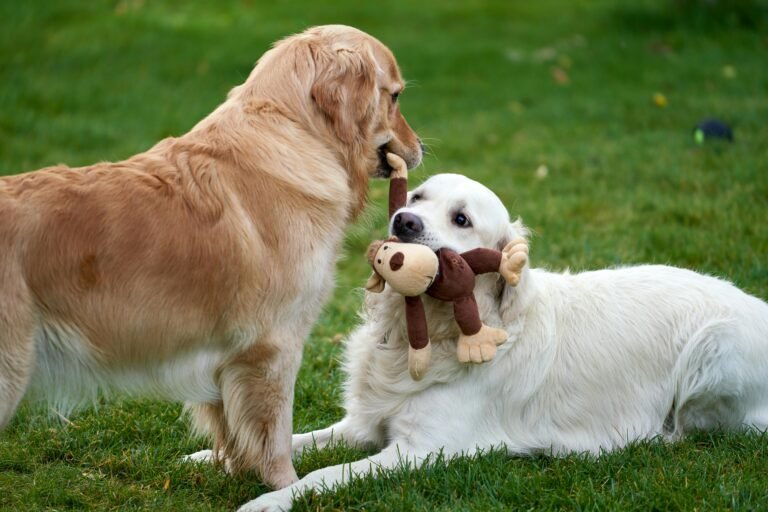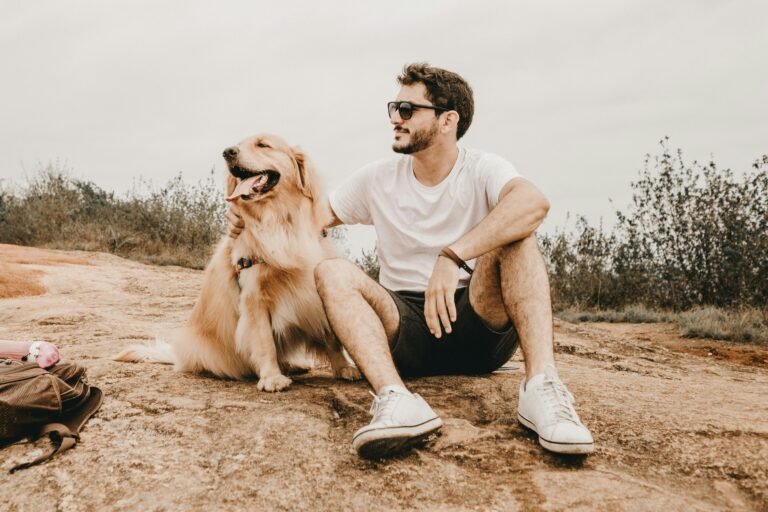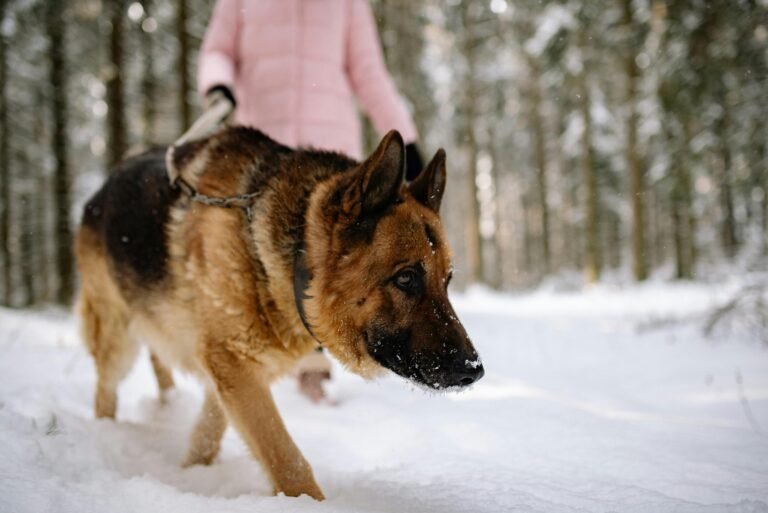Introduction
Your dog walks in circles, sometimes two or three times, before finally curling up to rest. It’s one of those universal dog behaviors — adorable, puzzling, and strangely ritualistic. Whether it’s on your bed, a pile of blankets, or a cool patch of grass, this spinning habit goes far beyond simple comfort. So, why do dogs circle before lying down? The answer blends instinct, environment, and psychology — a glimpse into their ancient wild ancestry and emotional state today.
1. A Behavior Rooted in Ancestry
The most widely accepted theory is that circling before lying down is an inherited behavior from dogs’ wild ancestors. Wolves and wild canines would circle to flatten grass, snow, or debris into a comfortable resting spot — much like fluffing a pillow before bed.
This circling helped them:
- ✅ Create a comfortable, level surface.
- ✅ Check for hidden insects, snakes, or sharp objects.
- ✅ Face the wind or observe surroundings for safety.
Pro Tip: Even though your dog has a cozy bed, this ancient instinct persists — proof that evolution doesn’t easily erase behaviors tied to survival.
2. Comfort and Temperature Regulation
Circling also helps dogs regulate body temperature. In nature, flattening grass exposes cooler ground in hot weather or traps warmth in cold conditions. Domestic dogs may mimic this behavior subconsciously, especially before lying on unfamiliar or uneven surfaces.
- Warm climates: Circling may expose cooler earth or tile beneath surface bedding.
- Cold climates: Dogs circle to nest and conserve heat in one area.
Even with modern comforts, that instinctive “temperature check” remains hardwired.
3. Marking Territory and Scent Familiarity
Dogs rely heavily on scent to define safe zones. Circling before lying down can help spread their unique scent onto the area, marking it as theirs. This scent-based “ownership” creates psychological comfort — especially in multi-dog households or unfamiliar environments.
Think of it as your dog’s way of saying, “This is my spot — I’m safe here.”
Fun Fact: Dogs have sweat glands in their paws, so each circle subtly reinforces scent boundaries even indoors.
4. Emotional Regulation and Ritual
Circling isn’t just physical — it’s emotional. Many dogs use repetitive actions to self-soothe before settling. Much like humans fluffing pillows or adjusting blankets, circling helps them prepare mentally for rest. It’s a calming ritual that signals it’s time to relax.
- 🐾 After excitement (walks, playtime), circling helps transition into rest mode.
- 🐾 Nervous dogs may circle more when anxious, creating a predictable routine for comfort.
- 🐾 Confident, relaxed dogs usually do just one or two spins before lying down.
Pro Tip: Watch for excessive circling — it might suggest anxiety or discomfort, especially if your dog can’t seem to settle.
5. Safety Scanning and Awareness
In the wild, dogs that paused to check their surroundings survived longer. Circling provided a 360° visual and scent check before resting — ensuring no threats nearby. Even though your living room is predator-free, the instinct remains.
- 👃 They take in scents from all directions.
- 👁️ They visually scan their territory.
- 👂 They tune in to ambient noises — creaks, voices, or outdoor sounds.
Once satisfied that all is well, they curl up — mission accomplished.
6. The Role of Breed and Personality
Some breeds circle more than others. Working dogs like Shepherds, Huskies, or Terriers often show stronger nesting instincts, while lapdogs may settle quickly. Personality plays a part too — meticulous or cautious dogs tend to spin more before resting.
- High-energy breeds: Circle more often, using it as a release before stillness.
- Calm breeds: One spin and done — efficient and focused.
- Anxious personalities: May circle repeatedly if unsure of their environment.
7. Health Reasons Behind Excessive Circling
While normal circling is harmless, excessive or compulsive spinning can signal discomfort or medical issues. If your dog takes unusually long to lie down, it’s worth a closer look.
- ⚠️ Joint pain or arthritis: Difficulty finding a comfortable position.
- ⚠️ Neurological issues: Repetitive or disoriented circling can indicate cognitive dysfunction in older dogs.
- ⚠️ Skin irritation or allergies: Discomfort may make it hard to settle.
If circling becomes excessive, consult your vet — especially for senior dogs.
8. The Psychology of Ritual Behavior
Dogs, like humans, thrive on patterns. Predictable routines help them feel secure and control their environment. Circling fits that pattern — a short, consistent ritual marking the transition from alertness to rest.
- 💤 It provides emotional stability and predictability.
- 🧠 It helps the brain shift gears — from alert to calm.
- 💖 It reinforces routine and familiarity — critical for dogs with anxiety.
Pro Tip: Observe your dog’s pre-sleep routine — small rituals can reveal a lot about their stress levels and overall comfort.
9. How to Support Healthy Resting Behavior
- 🛏️ Provide a supportive bed — orthopedic foam or memory beds help dogs settle faster.
- 🌡️ Keep temperature consistent — avoid drafts or overheating spots.
- 👃 Wash bedding regularly but keep familiar scents — over-cleaning removes comforting smells.
- 🎵 Add soft background noise or music for relaxation (especially for anxious dogs).
Encouraging a peaceful environment reduces restless circling and promotes deeper, more restorative sleep.
10. Fun Observation Exercise
Next time your dog circles before lying down, watch closely:
- How many times do they spin?
- Do they sniff or pause before circling?
- Is the surface soft, hard, or unfamiliar?
These clues reveal what your dog is feeling — calm dogs often do fewer circles, while cautious or alert ones do more. Over time, this small ritual becomes a fascinating insight into their state of mind.
Conclusion
What looks like a funny bedtime dance is actually a window into your dog’s instincts, comfort, and emotional world. Circling before lying down connects modern pets to their wild ancestors — a blend of nesting, scanning, and self-soothing rolled into one graceful spin. It’s nature’s bedtime story told in circles, reminding us that even after thousands of years by our side, our dogs still carry the wisdom of the wild in their nightly rituals.




